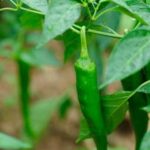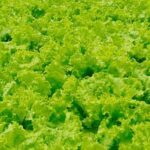Are you looking to start your own vegetable garden in North Texas? Look no further. This comprehensive North Texas Vegetable Gardening Guide will provide you with all the information you need to start and maintain a successful vegetable garden in the region.
From climate and soil conditions to pest control and irrigation techniques, this guide covers it all. Whether you’re a seasoned gardener or a beginner, this guide will help you grow a bountiful harvest of fresh vegetables right in your own backyard.
North Texas offers its unique set of challenges and opportunities for vegetable gardening due to its specific climate and soil conditions. Understanding these factors is essential for choosing the right vegetables to grow, knowing when to plant and harvest, and implementing proper care techniques. This guide will walk you through the climate and soil conditions of North Texas, giving you the knowledge needed for successful vegetable gardening in the region.
In addition to learning about climate and soil conditions, this guide will also discuss the best vegetables to grow in North Texas, as well as tips for successful growing seasons. Whether you’re interested in planting tomatoes, peppers, cucumbers, or squash, this guide will provide valuable insights on how to cultivate these crops effectively in North Texas.
Furthermore, understanding the different growing seasons and their impact on vegetable growth is crucial for planning and maintaining a productive garden. Let’s dive into the diverse world of North Texas vegetable gardening.
Climate and Soil Conditions in North Texas
North Texas is known for its hot and dry climate, with temperatures often reaching over 100°F in the summer months. The region also experiences unpredictable weather patterns, including severe thunderstorms and occasional frost during the winter. As a result, it is important for vegetable gardeners in North Texas to choose plants that can thrive in these conditions.
The soil in North Texas is predominantly clay-based, which can present challenges for gardening. Clay soil tends to drain poorly and can become compacted, making it difficult for plant roots to penetrate. However, with proper amending and soil management techniques, it is possible to create a healthy growing environment for vegetables in North Texas.
Many types of vegetables can be successfully grown in North Texas, including tomatoes, peppers, squash, cucumbers, okra, and beans. These warm-season crops are well-suited to the hot climate and long growing season of North Texas. Additionally, some cold-hardy vegetables like cabbage, kale, and carrots can be grown during the cooler months.
In order to maximize success with vegetable gardening in North Texas, it is important for gardeners to understand the local climate and soil conditions. By selecting appropriate plant varieties and implementing proper soil management techniques, gardeners can create thriving vegetable gardens in this challenging environment.
For more detailed information on best practices for vegetable gardening in North Texas, gardeners can refer to reputable resources such as the “North Texas Vegetable Gardening Guide” provided by local agricultural extension services or gardening organizations.
Best Vegetables to Grow in North Texas
When it comes to vegetable gardening in North Texas, choosing the right vegetables to grow is crucial for a successful harvest. The region’s unique climate and soil conditions present both challenges and opportunities for gardeners. Here are some of the best vegetables to consider growing in your North Texas garden:
- Tomatoes: Tomatoes thrive in the warm, sunny climate of North Texas. Varieties such as Big Beef, Roma, and Cherry tomatoes are well-suited for the region.
- Peppers: Bell peppers, jalapenos, and banana peppers are excellent choices for North Texas gardens. They require well-drained soil and plenty of sunlight.
- Squash: Zucchini, yellow squash, and butternut squash are all good options for North Texas gardens. These fast-growing vegetables do well in the warm temperatures of the region.
- Green Beans: Both bush and pole beans are suitable for North Texas. Green beans are easy to grow and produce a bountiful harvest throughout the growing season.
In addition to these popular vegetables, other crops such as okra, cucumbers, and sweet potatoes also thrive in North Texas. When selecting which vegetables to grow in your garden, it’s essential to consider factors such as sunlight exposure, water requirements, and soil quality. By choosing vegetables that are well-adapted to the region’s climate and soil conditions, you can increase your chances of a successful harvest.
Ultimately, the best vegetables to grow in North Texas will vary depending on specific microclimates within the region. It’s important for gardeners to experiment with different varieties and observe which crops perform best in their particular location. Additionally, seeking advice from local gardening experts or utilizing resources specifically tailored to North Texas vegetable gardening can provide valuable insights into which vegetables are most suitable for your garden.
Understanding the Growing Seasons in North Texas
When it comes to vegetable gardening in North Texas, understanding the growing seasons is essential for a successful harvest. The region experiences a unique climate that can affect when certain vegetables should be planted and harvested. Here is a guide to the growing seasons in North Texas:
1. Spring: In North Texas, the spring season typically runs from March to May. This is the ideal time to plant vegetables such as tomatoes, peppers, squash, cucumbers, and green beans. These warm-season crops thrive in the moderate temperatures of spring and have enough time to mature before the scorching summer heat sets in.
2. Summer: The summer season in North Texas lasts from June to August and brings with it hot temperatures and high humidity. While some vegetables may struggle in these conditions, others like okra, sweet potatoes, and black-eyed peas actually thrive. It’s important to provide adequate shade and water during this time to prevent heat stress on plants.
3. Fall: Fall in North Texas spans from September through November. This season is perfect for planting cool-season crops like lettuce, spinach, carrots, radishes, and broccoli. These vegetables can withstand cooler temperatures and even benefit from a light frost.
Understanding the specific growing seasons for North Texas will help gardeners plan their planting schedules effectively and maximize their harvests.
Tips for Successful Vegetable Gardening in North Texas
When it comes to successful vegetable gardening in North Texas, there are a few tips and best practices that can help you achieve a bountiful harvest. One of the most important factors to consider is the region’s climate and soil conditions. North Texas has a hot and arid climate, so it is crucial to choose vegetable varieties that are well-adapted to these conditions and can withstand the heat.
Another tip for successful vegetable gardening in North Texas is to make sure that your plants receive adequate water and irrigation. With the region’s hot and dry climate, it’s essential to water your garden regularly, especially during the peak summer months. Additionally, using mulch can help retain moisture in the soil and reduce evaporation, keeping your plants hydrated and healthy.
In addition to climate considerations, it’s also essential to pay attention to the growing seasons in North Texas. Understanding when to plant specific vegetables based on the region’s unique growing seasons can significantly impact your garden’s success. By planting at the right time, you can maximize your yield and ensure that your vegetables thrive in their optimal conditions.
| Tips for Successful Vegetable Gardening | North Texas Vegetable Gardening Guide |
|---|---|
| Choose heat-tolerant vegetable varieties | Hot and arid climate requires plants that can withstand heat |
| Regular watering and use of mulch | Helps retain moisture in the soil during North Texas’ hot and dry climate |
| Planting based on growing seasons | Maximize yield by understanding when to plant specific vegetables |
Pest Control and Disease Management for North Texas Vegetables
North Texas is a great place to grow vegetables, but it also comes with its fair share of challenges when it comes to pests and diseases that can affect your garden. It’s important to be proactive in managing these issues to ensure a successful harvest.
One common pest in North Texas vegetable gardens is the tomato hornworm, which can quickly defoliate your tomato plants if left untreated. Using natural predators like ladybugs or handpicking the hornworms can help control their population. In addition, installing row covers early in the season can prevent infestations from occurring.
Diseases such as powdery mildew and blossom end rot can also impact your vegetable garden in North Texas. To prevent powdery mildew, make sure there is adequate air circulation around your plants and avoid overhead watering. For blossom end rot, maintaining consistent soil moisture by using mulch and providing proper calcium levels can help reduce the occurrence of this common issue.
Implementing integrated pest management practices, choosing disease-resistant varieties, and practicing good sanitation in your garden are essential steps in maintaining a healthy vegetable garden in North Texas.
By being vigilant and taking proactive measures against pests and diseases, you can enjoy a bountiful harvest of vegetables from your North Texas garden. Remember to regularly inspect your plants for any signs of trouble, and take action promptly to keep your garden thriving all season long.
Watering and Irrigation Techniques for North Texas Vegetable Gardens
When it comes to successful vegetable gardening in North Texas, proper watering and irrigation techniques are crucial for the health and productivity of your plants. The hot and often dry climate of North Texas can pose a challenge for maintaining adequate moisture levels in the soil, making it essential to implement efficient watering practices.
Understanding Water Needs
Different vegetables have varying water needs, so it’s important to familiarize yourself with the specific requirements of the crops you’re growing. Generally, most vegetables require about 1 inch of water per week, either from rainfall or supplemental irrigation. However, during periods of extreme heat or drought, they may need even more water to thrive.
Irrigation Methods
There are several effective irrigation methods that can be used in North Texas vegetable gardens. Drip irrigation is a popular choice for many gardeners because it delivers water directly to the root zone of plants, minimizing evaporation and reducing the risk of diseases caused by wet foliage. Soaker hoses and mulch can also help conserve moisture and reduce water waste by preventing runoff.
Conserving Water
In a region like North Texas where water conservation is important, consider implementing strategies to minimize water usage in your vegetable garden. Collecting rainwater in barrels for later use, mulching to retain soil moisture, and choosing drought-tolerant vegetable varieties are all effective ways to conserve water while still providing for the needs of your plants.
By implementing these watering and irrigation techniques in your North Texas vegetable garden, you can help ensure that your plants stay healthy and productive throughout the growing season. With careful attention to their water needs and thoughtful conservation efforts, you can enjoy a bountiful harvest while also being mindful of this valuable resource.
Harvesting and Preserving Your North Texas Vegetable Garden Produce
When it comes to harvesting your vegetables in North Texas, timing is everything. Each vegetable has its own ideal time for harvesting, and it’s important to pay attention to these guidelines to ensure the best flavor and texture. For example, tomatoes should be picked when they are fully ripe and have a deep red color, while bell peppers can be harvested when they reach their full size and have turned the appropriate color for their variety.
Preserving Your North Texas Vegetable Garden Produce
Once you’ve harvested your vegetables, it’s important to make sure they stay fresh as long as possible. Storing them properly can extend their shelf life and let you enjoy the fruits of your labor for longer.
For example, many root vegetables like carrots and beets can be stored in a cool, dark place like a cellar or basement for several weeks. Leafy greens like lettuce and spinach should be refrigerated in a plastic bag with some moisture to keep them crisp.
Canning and Freezing Your North Texas Vegetable Garden Produce
If you find yourself with an abundance of produce from your North Texas vegetable garden, consider preserving them through canning or freezing. This way, you can enjoy your homegrown vegetables throughout the year even when they are out of season.
Tomatoes are commonly canned into sauces or salsas, while beans and peas freeze well after being blanched. It’s important to follow safe canning practices to prevent foodborne illness, so make sure to research proper techniques before attempting this preservation method.
By paying attention to the optimal harvest times for each vegetable, practicing proper storage techniques, and considering canning or freezing methods for excess produce, you can enjoy the fruits of your labor from your North Texas vegetable garden all year round.
Resources for North Texas Vegetable Gardeners
In conclusion, the North Texas Vegetable Gardening Guide provides valuable information and resources to help gardeners in the region successfully grow their own produce. With its diverse climate and soil conditions, North Texas presents both opportunities and challenges for vegetable gardening. By understanding the growing seasons, selecting the best vegetables to grow, and implementing sound pest control and disease management strategies, gardeners can maximize their harvests.
Additionally, the guide offers tips for successful vegetable gardening, including watering and irrigation techniques tailored to North Texas conditions. It also provides guidance on harvesting and preserving garden produce to make the most of the hard work that goes into cultivating a vegetable garden. Furthermore, the guide includes a comprehensive list of resources specifically curated for North Texas vegetable gardeners, such as local nurseries, agricultural extension services, and online forums where gardeners can exchange tips and experiences.
Ultimately, with the valuable insights provided by the North Texas Vegetable Gardening Guide, aspiring and experienced gardeners alike will have a solid foundation to embark on their gardening journey. Whether it’s planting tomatoes or carrots or learning how to combat common pests in this region, this guide serves as an indispensable tool for anyone looking to cultivate a thriving vegetable garden in North Texas.
Frequently Asked Questions
What Vegetables Are Easy to Grow in North Texas?
In North Texas, some of the easiest vegetables to grow include tomatoes, bell peppers, zucchini, and green beans. These vegetables thrive in the warm climate and are relatively low-maintenance, making them ideal for beginner gardeners.
When Should I Start a Vegetable Garden in Texas?
The best time to start a vegetable garden in Texas is typically in early spring, around March or April. This allows the soil to warm up and reduces the risk of frost damaging your plants. However, specific timing may vary depending on the exact location within Texas.
What Vegetables Grow Best in Texas Heat?
Certain vegetables are well-suited to the intense heat of Texas summers. These include okra, black-eyed peas, sweet potatoes, and peppers. These heat-tolerant vegetables can withstand the high temperatures and still produce a bountiful harvest despite the challenging conditions.

If you’re looking to get into vegetable gardening, or are just looking for some tips on how to make your current garden better, then you’ve come to the right place! My name is Ethel and I have been gardening for years. In this blog, I’m going to share with you some of my best tips on how to create a successful vegetable garden.





